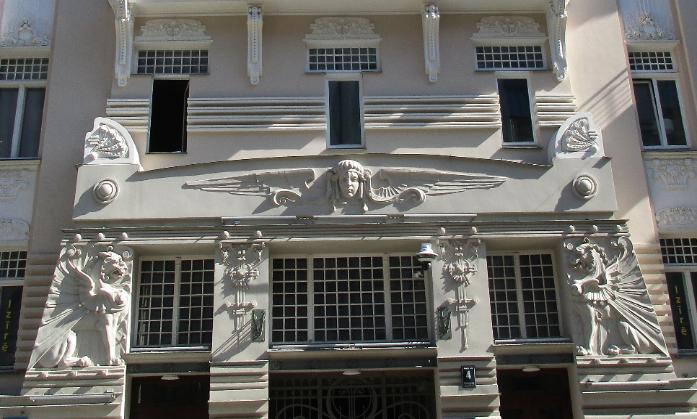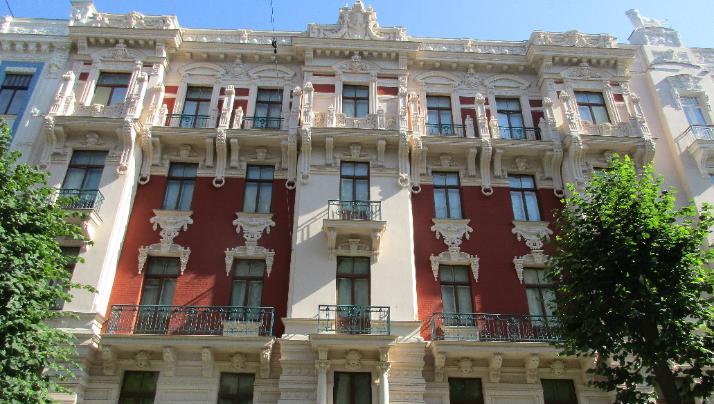
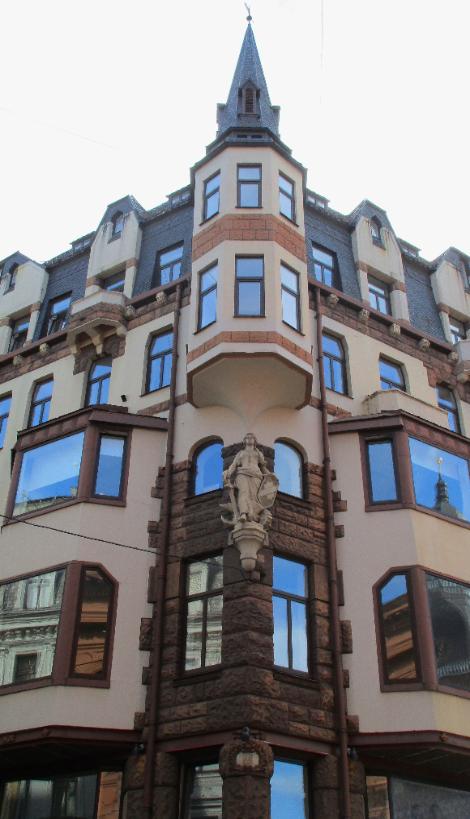
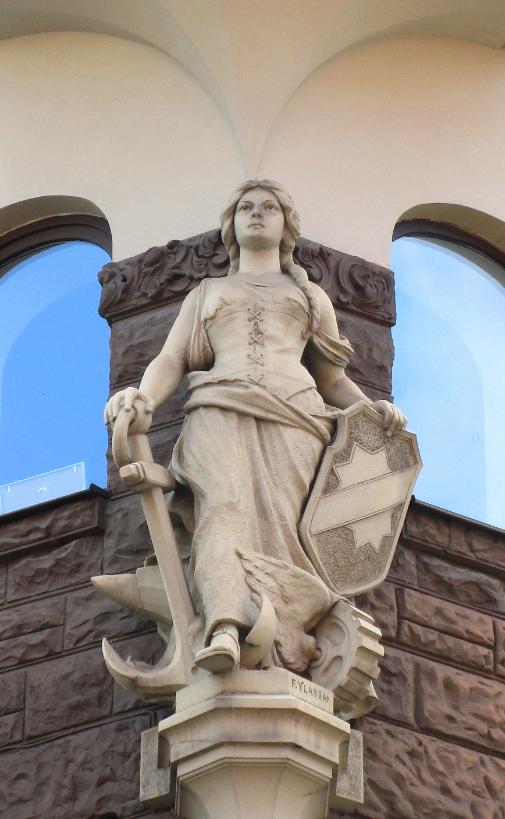
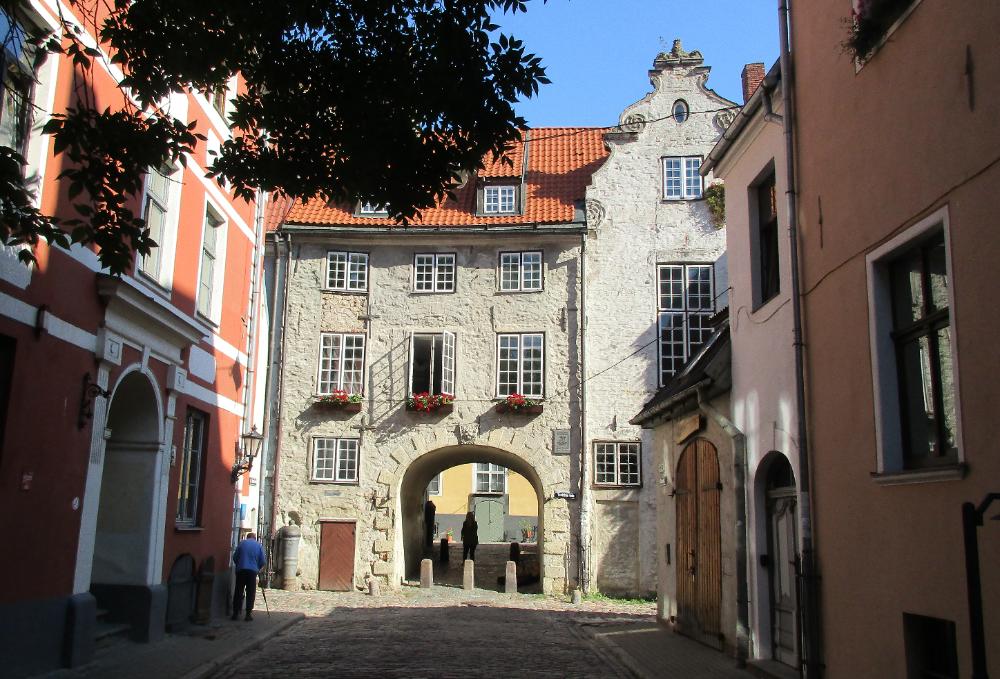
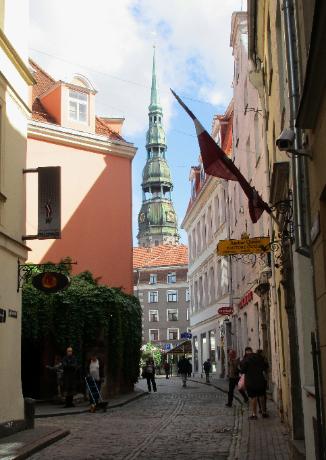
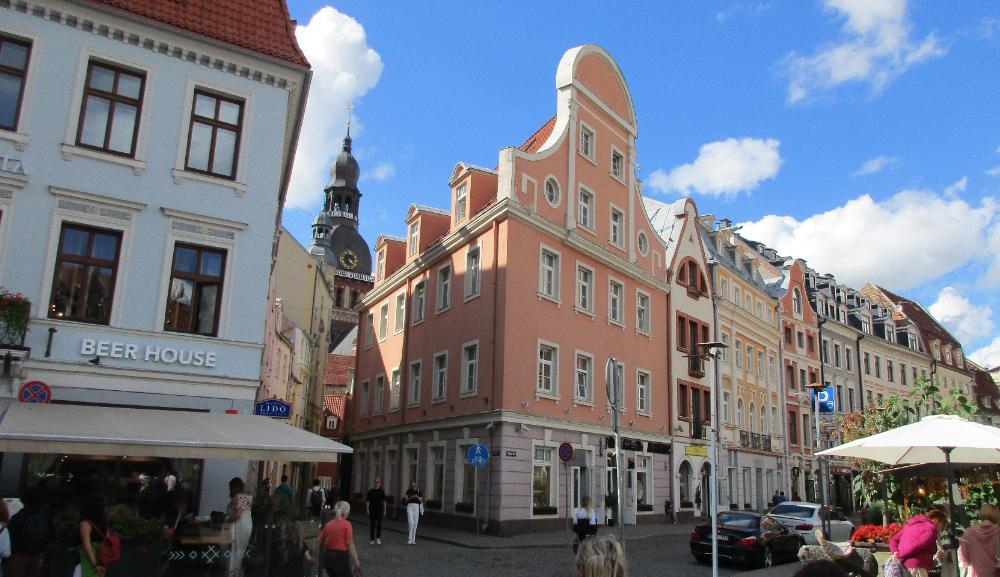
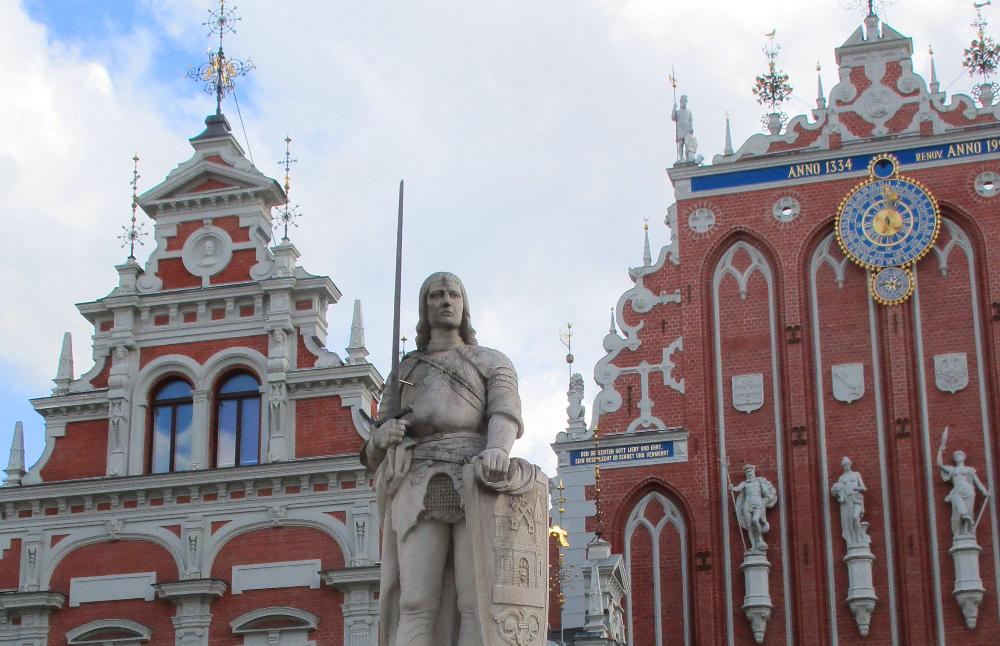
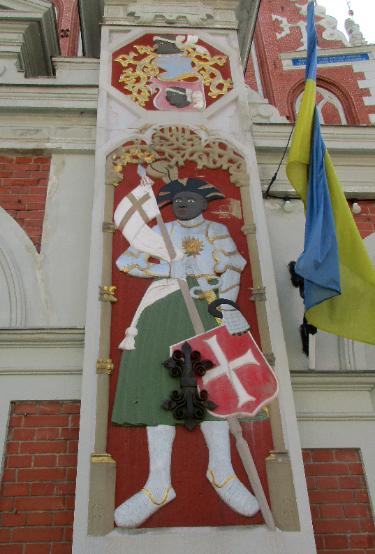
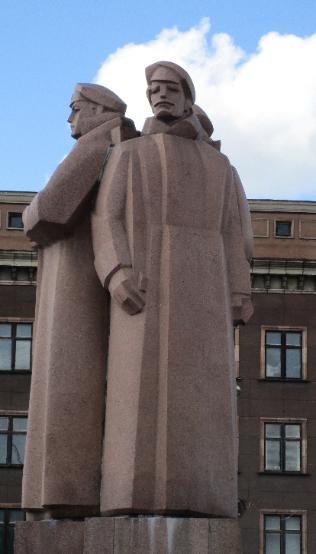
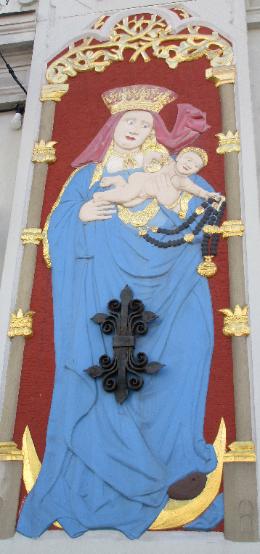
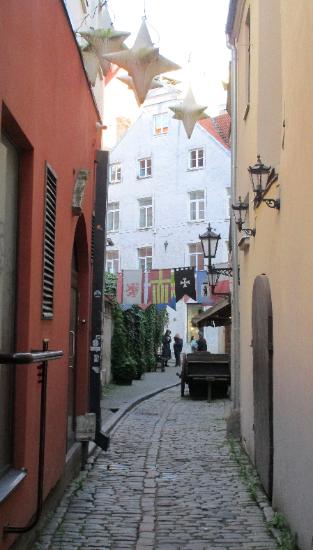
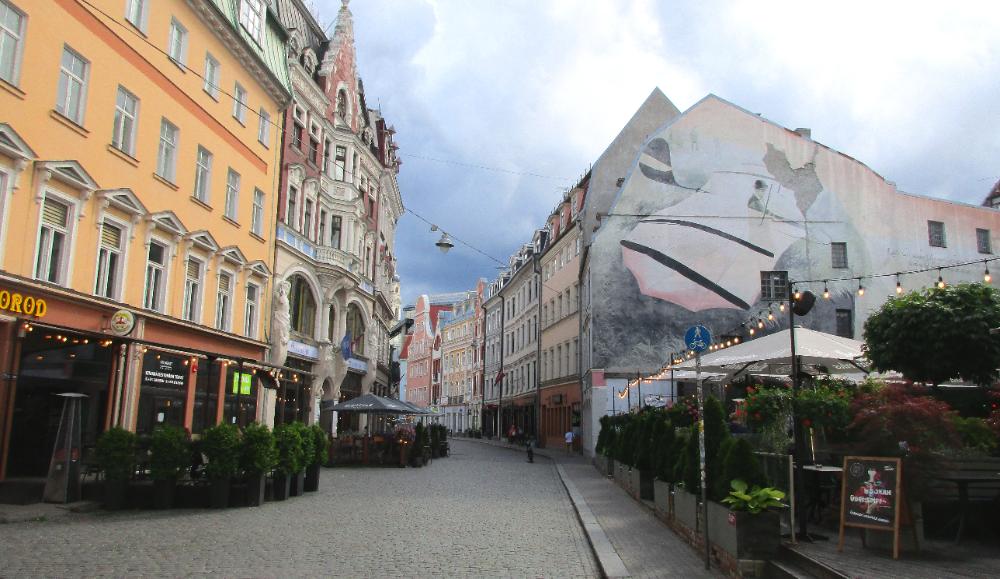
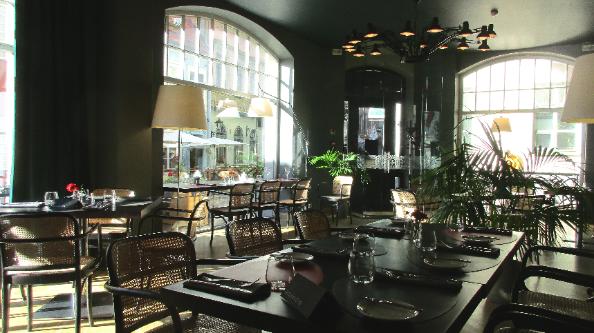
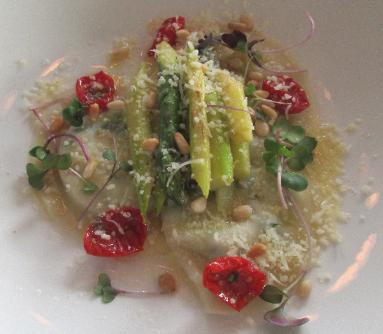
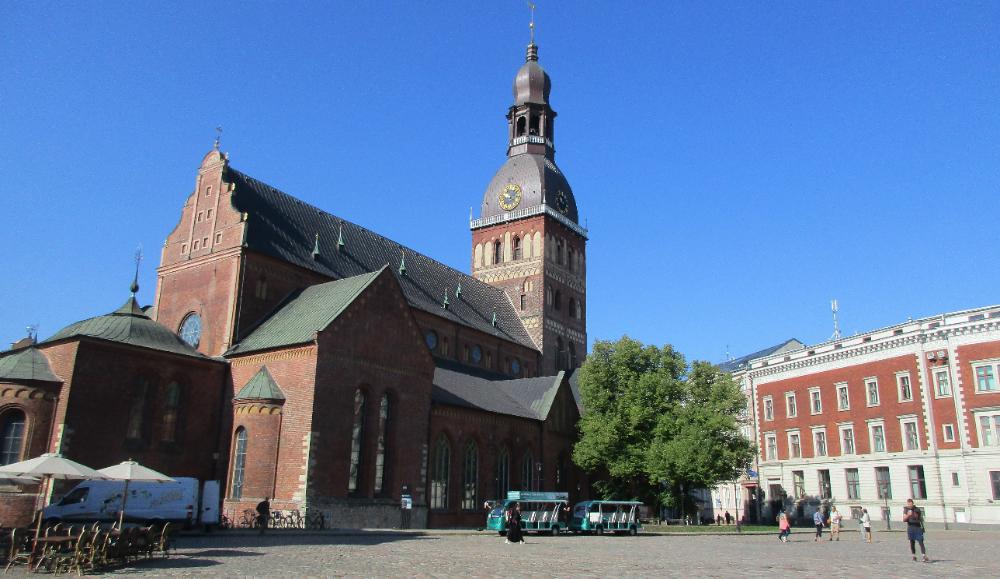
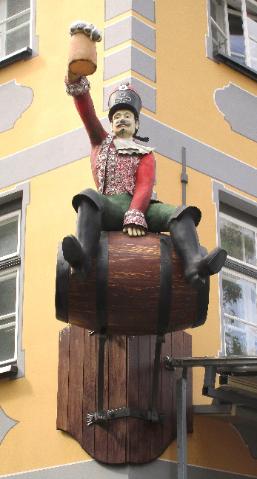
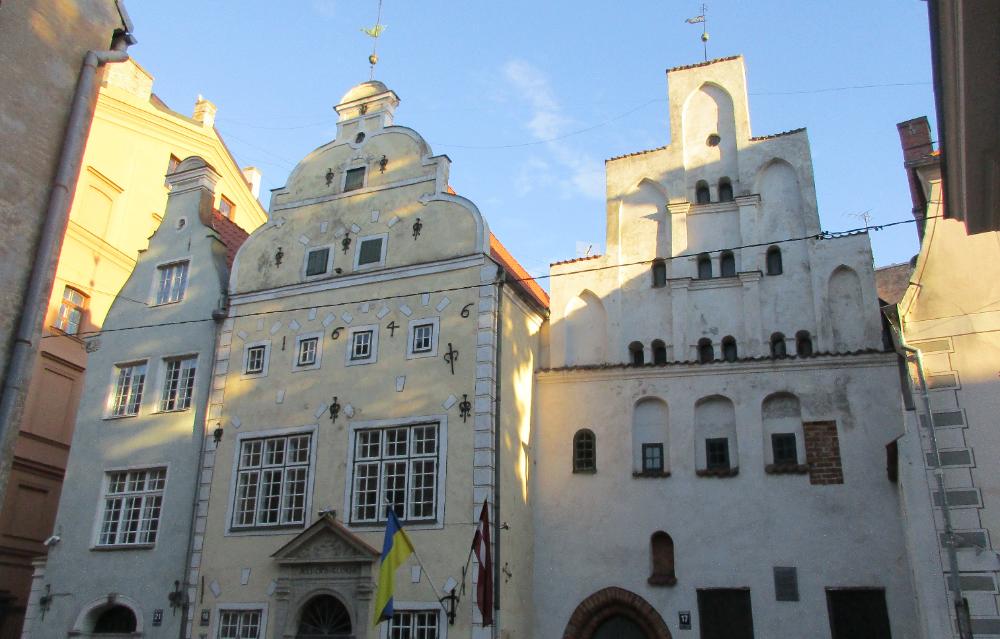
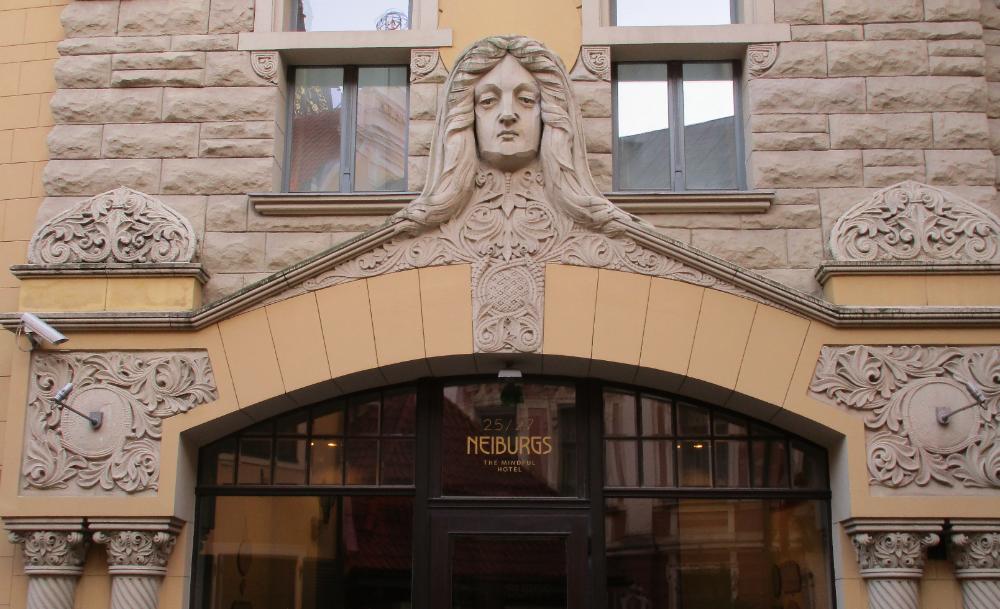
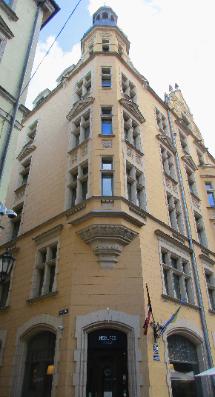
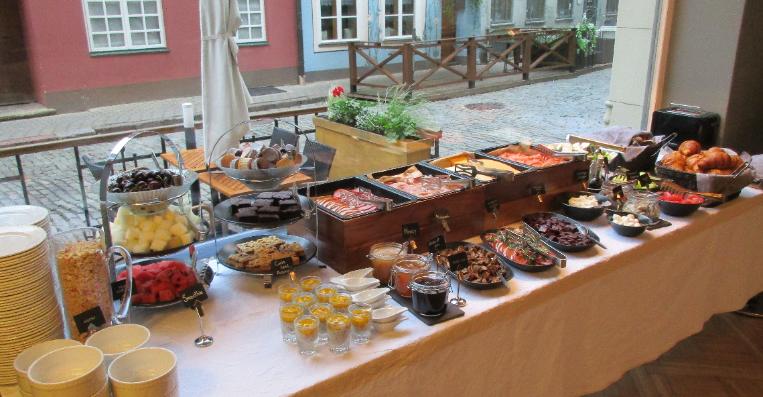
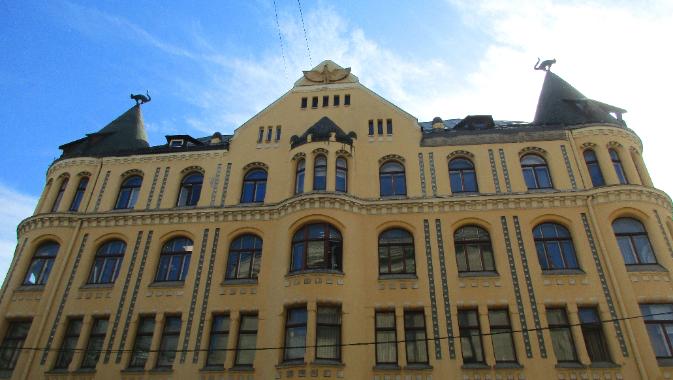
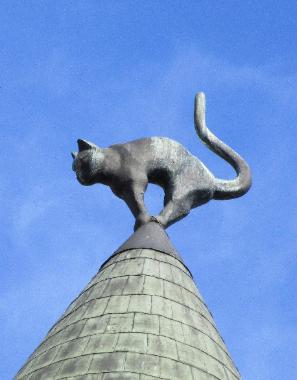
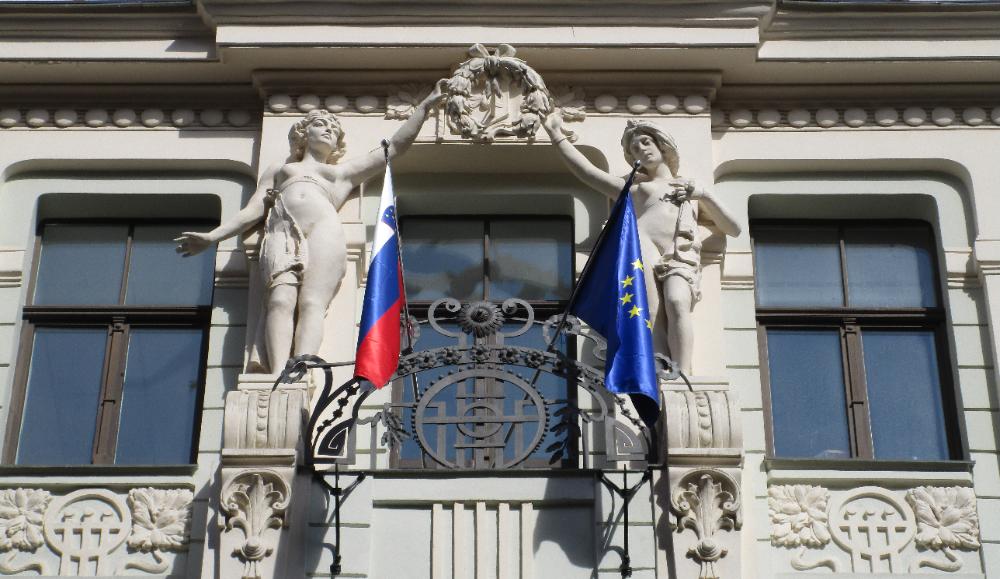
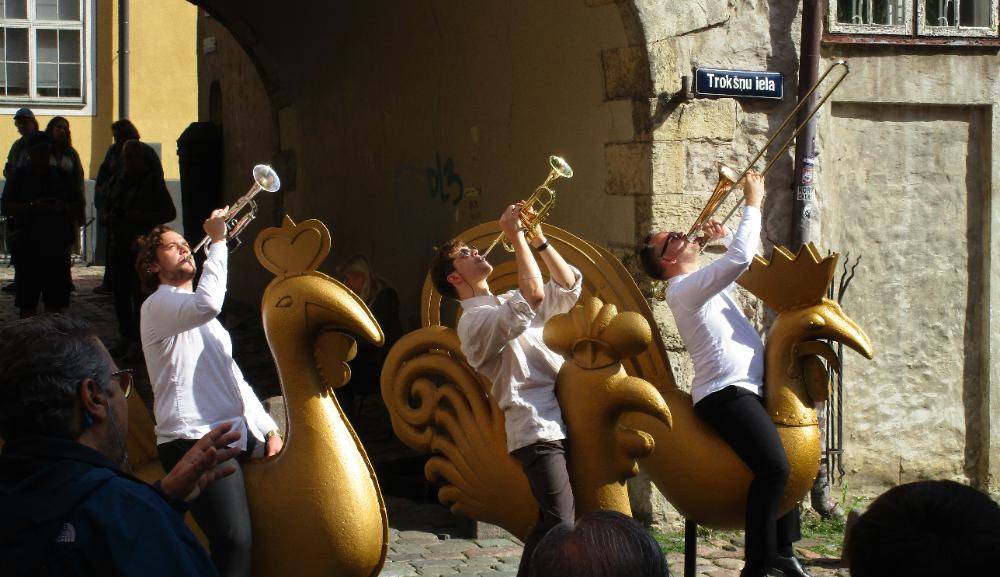
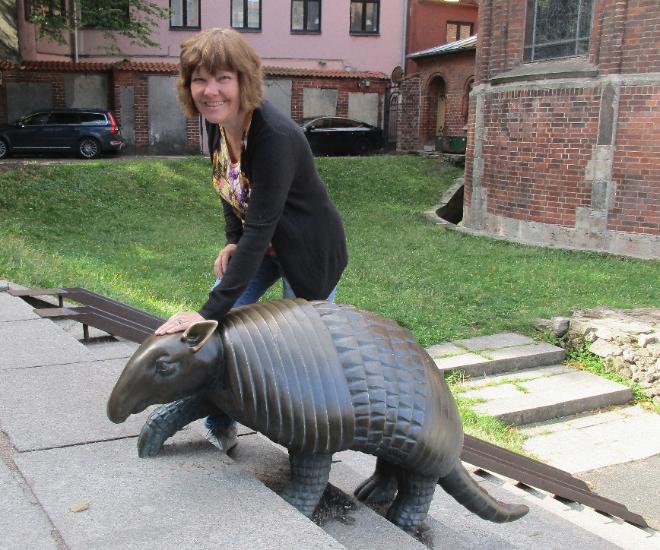
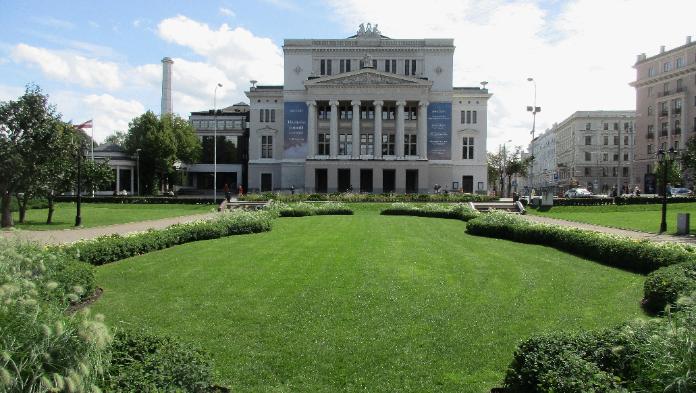
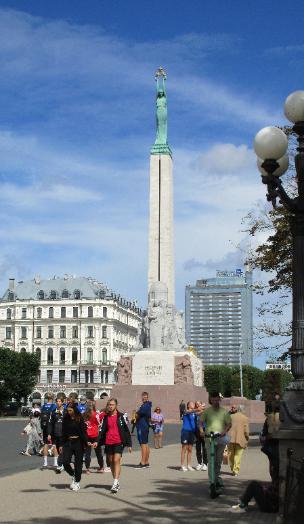
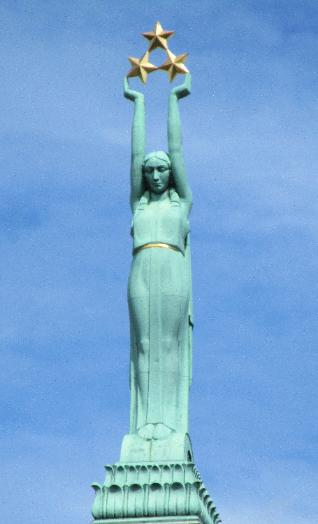
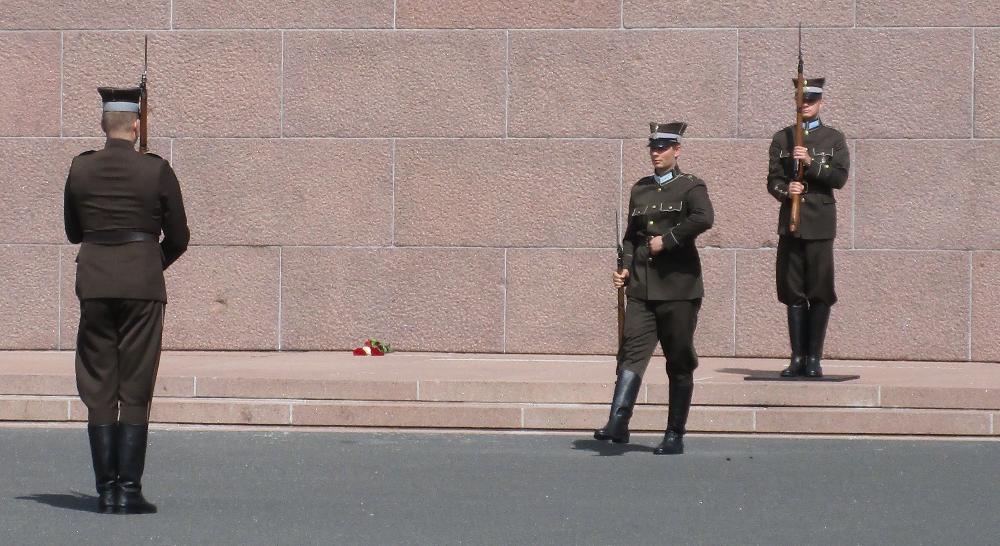
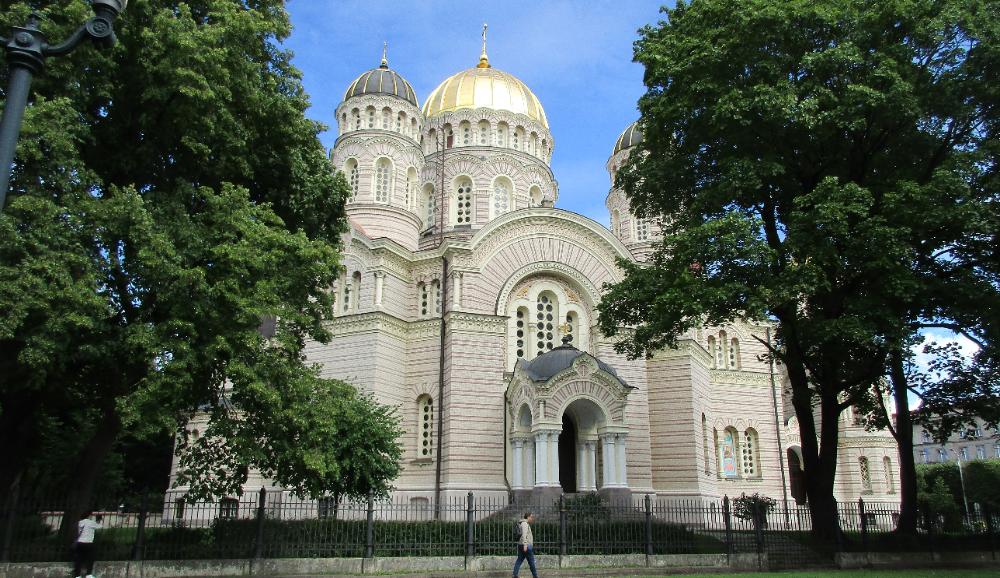
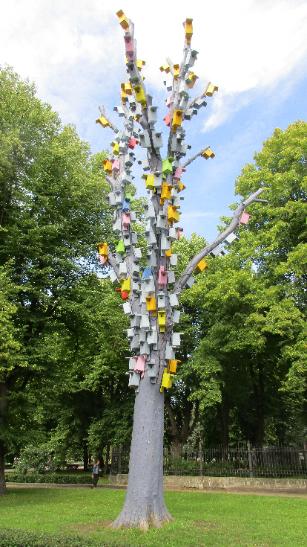
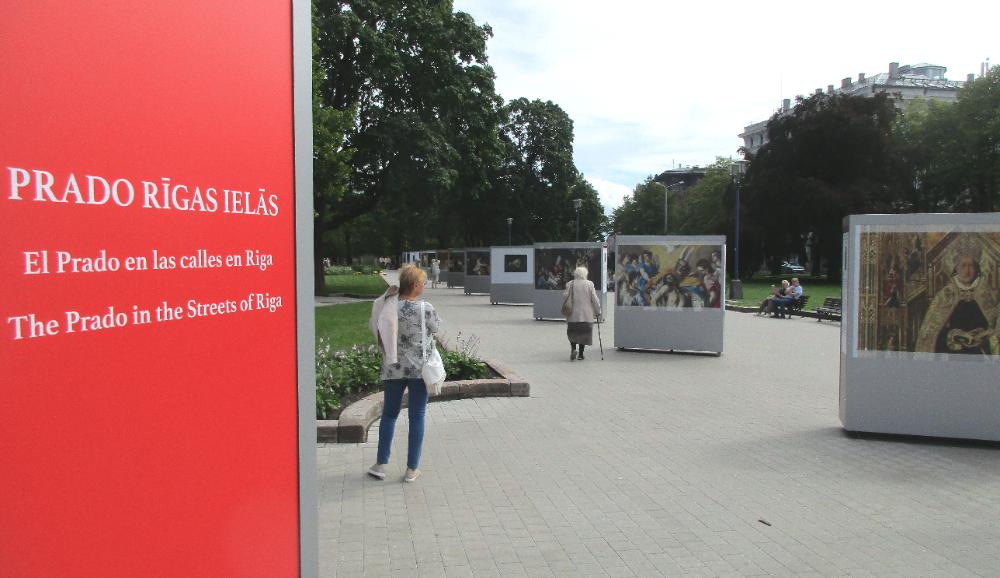
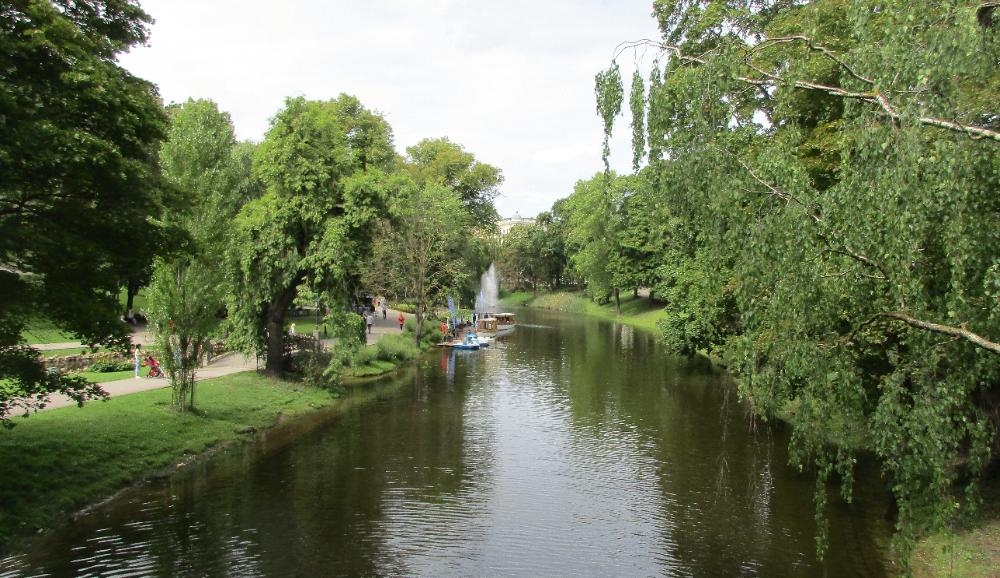
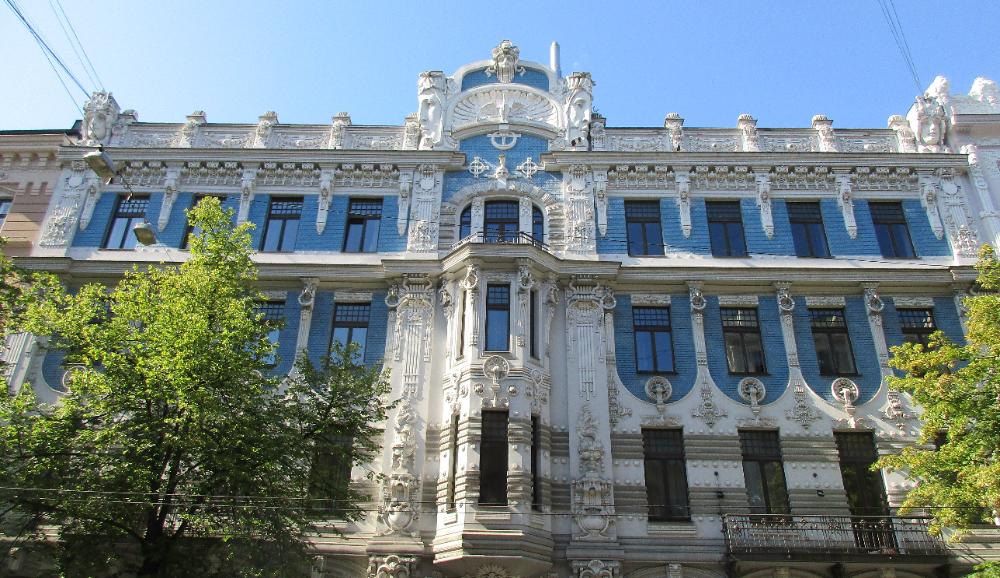
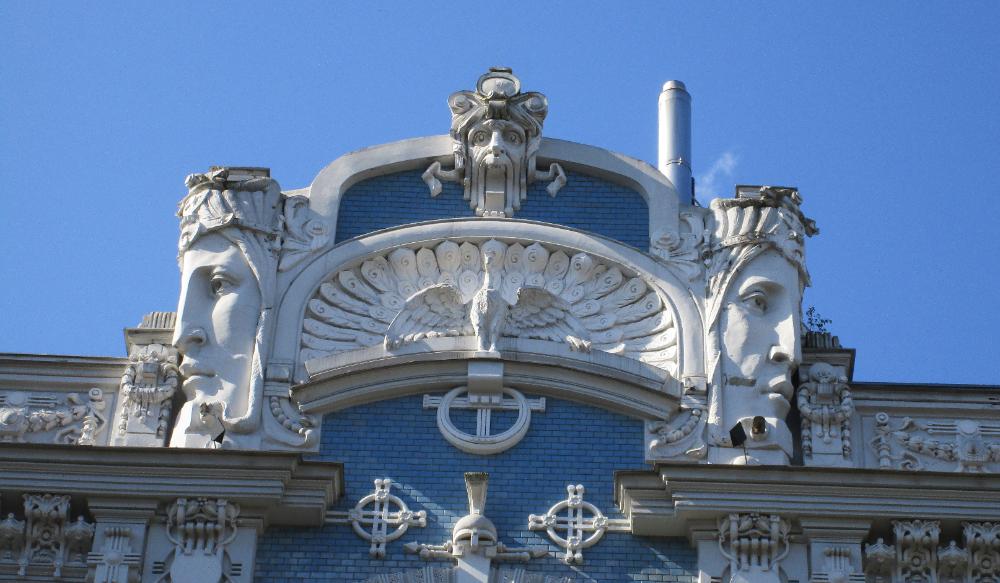
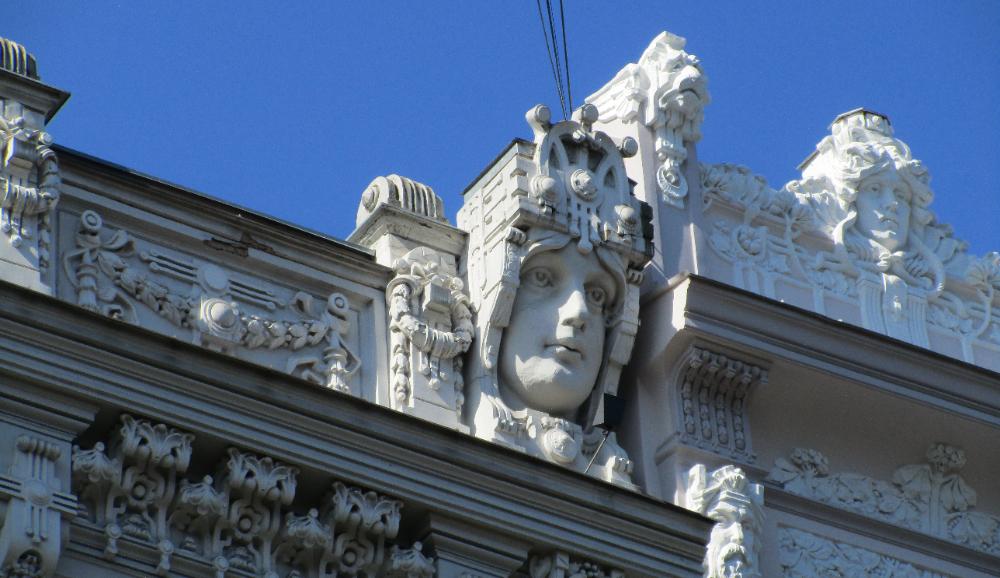
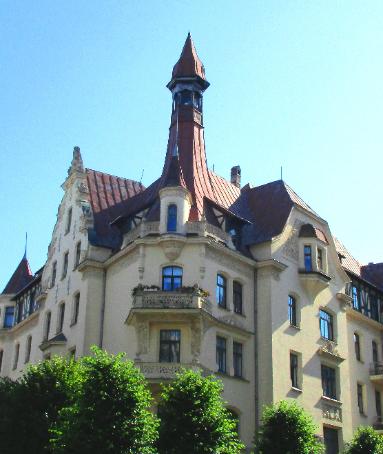
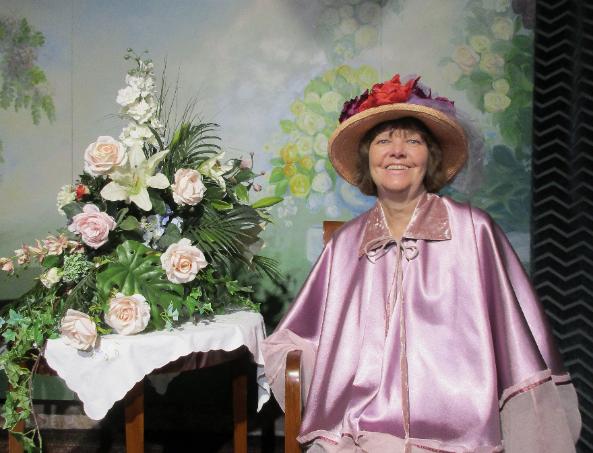
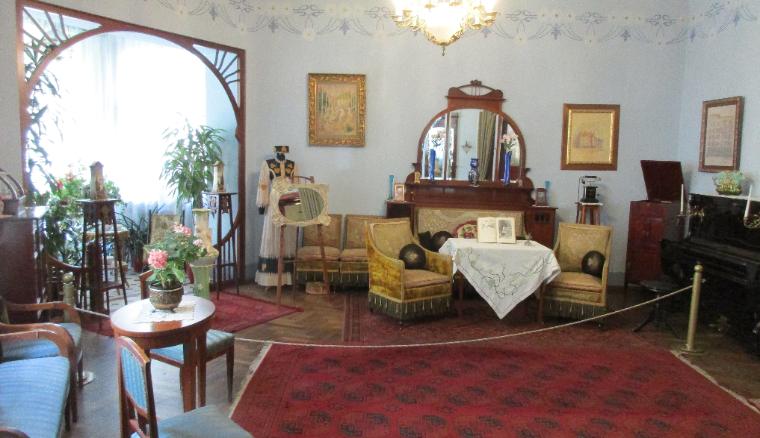
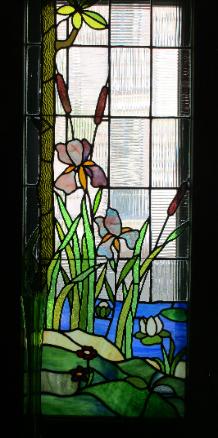
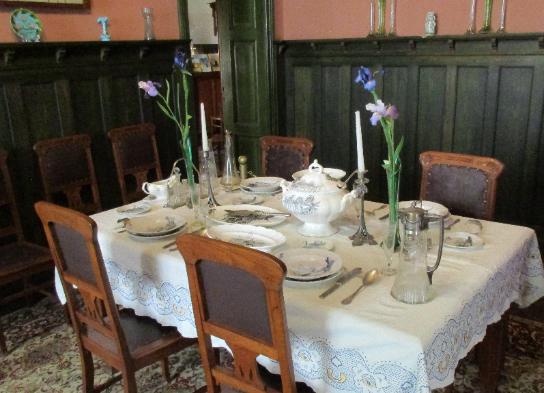
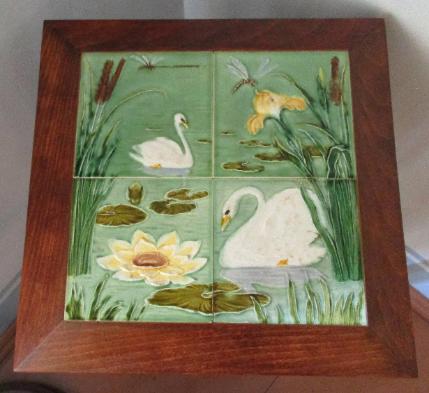
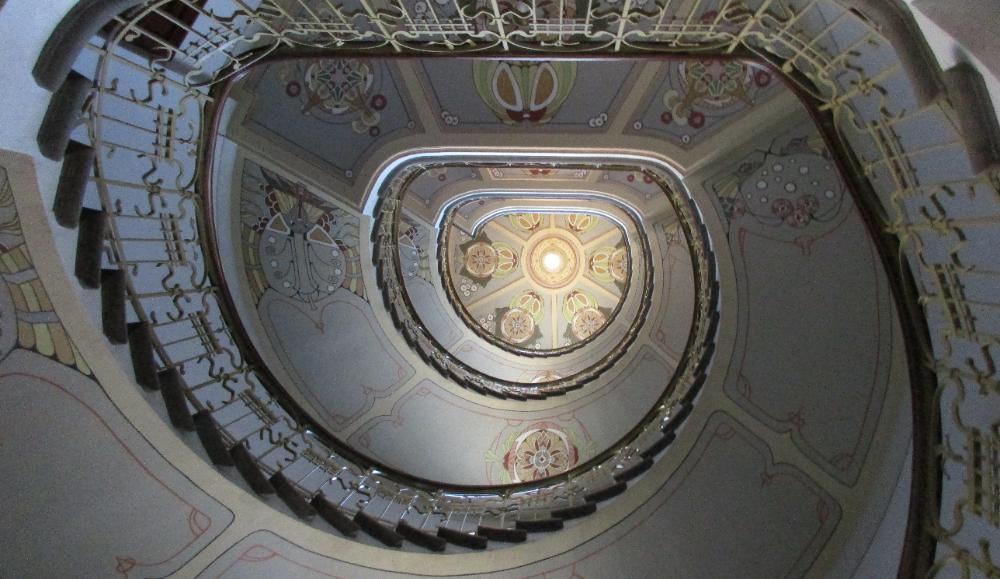
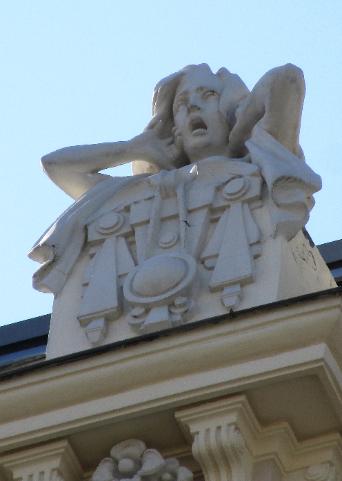
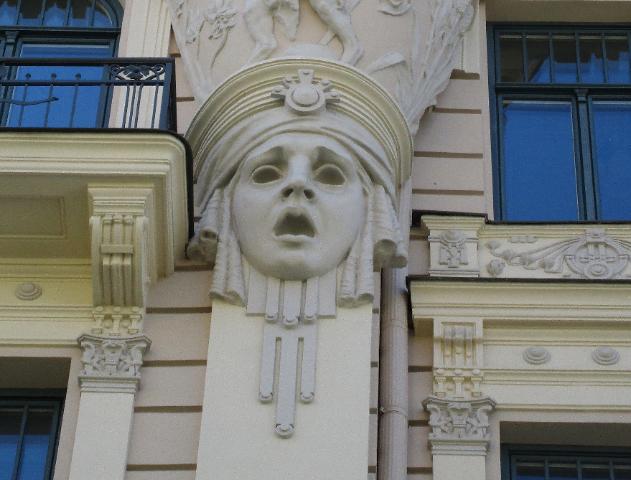

Where We Be
| The original House of the Blackheads was erected back in the 1300s, so way too early for Art Nouveau -- more like Art Ancien |
| Riga, Latvia |
We didn't know much about Riga beforehand,
so we were pleasantly surprised to discover
just how much beautiful architecture is here. It
turns out Riga is the Art Nouveau capital of the
world. More than a third of its buildings -- over
800 overall -- feature this style. As we soon
learned, Art Nouveau (1890-1910) is different
than Art Deco (1920s-30s). In a nutshell, if it's
highly ornamented with natural themes (vines,
flowers, insect wings) and images of the female
form, then it's probably Art Nouveau. Latvians
have even chosen a “Miss Riga” from all the
female sculptures adorning their city.
It's hard to put your camera down here. There's
just so much beautiful detail in the architecture
everywhere you look. Riga's historic center is
vibrant, walkable, and brimming with beauty. A
good place to start is Town Hall Square, the epi-
center of Old Town. Here you'll find the House
of the Blackheads, Riga's most iconic landmark
(shown left). Founded by merchants in the 13th
century, it's a mix of red bricks and frilly white
“icing.” It's also famous as the site of the
world's first decorated Christmas tree (1510).
so we were pleasantly surprised to discover
just how much beautiful architecture is here. It
turns out Riga is the Art Nouveau capital of the
world. More than a third of its buildings -- over
800 overall -- feature this style. As we soon
learned, Art Nouveau (1890-1910) is different
than Art Deco (1920s-30s). In a nutshell, if it's
highly ornamented with natural themes (vines,
flowers, insect wings) and images of the female
form, then it's probably Art Nouveau. Latvians
have even chosen a “Miss Riga” from all the
female sculptures adorning their city.
It's hard to put your camera down here. There's
just so much beautiful detail in the architecture
everywhere you look. Riga's historic center is
vibrant, walkable, and brimming with beauty. A
good place to start is Town Hall Square, the epi-
center of Old Town. Here you'll find the House
of the Blackheads, Riga's most iconic landmark
(shown left). Founded by merchants in the 13th
century, it's a mix of red bricks and frilly white
“icing.” It's also famous as the site of the
world's first decorated Christmas tree (1510).
| Changing of the guard in front of the Freedom Monument -- very formal and precise |
| Just beyond the park is the Nativity of Christ Orthodox Cathedral, a gorgeous neo-Byzantine building from 1876 |
| The park's Esplanade also hosts art events -- like this cool collection of art from the Prado Museum in Madrid |
| Near the Freedom Monument is Bastejkalna Park, spanning both sides of the canal running through town |
| The park is home to some fun works of art, including this snail carrying the world on its back and this colorful "bird house tree" |
| Right around the corner, on Elizabetes Street, is Building 10a, considered an Art Nouveau masterpiece by “Riga’s Gaudi,” Mikhail Eisenstein |
| Its crown features elongated faces staring out pensively from above |
| The faces seem to be pondering something deep, known only to them |
| At the Art Nouveau Museum on Albert Street (€9 pp), Robin plays dress-up for a period-piece photo shoot |
| The museum is a time capsule of sorts -- an Art Nouveau apartment built in 1903 by the famous Latvian architect Konstantīns Pēkšēns |
| The apartment contains much of its original furniture and décor |
| The highlight of the museum is the breathtaking spiral staircase -- worth the price of admission all by itself |
| Other faces are frozen in fear or despair -- expressions rarely if ever seen except in Art Nouveau architecture |
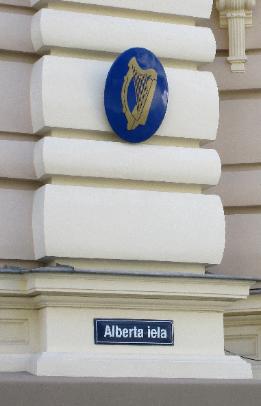
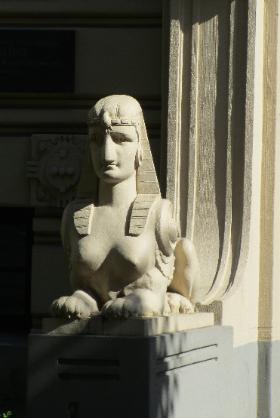
| Old Town is a photographer's paradise with its abundance of fine architecture |
| "Our block" during our three-day stay in Riga |
| Roland, nephew of Charlemagne, stands guard in front of House of the Blackheads, which was rebuilt after having been destroyed in World War II |
| St. Maurice, patron saint of the Blackheads (a brotherhood of bachelor merchants) |
| Only in the early morning hours do you find the streets this empty |
| Dinner at Neiburgs isn't half-bad either |
| Riga Cathedral -- the largest medieval church in the Baltic states -- is one of the city's most recognizable landmarks |
| Riga Beer Bikes -- one way to get your exercise! |
| The “Three Brothers” at Mazā Pils are the oldest houses in Riga (late 15th century) |
| Even our Neiburgs Hotel boasts a memorably patrician face atop its entryway |
| Neiburgs puts out quite the spread at breakfast each morning (hot dishes are out of frame to the right) |
| Beside the church is a playground with animal statues, including this pangolin |
| The female form is one of the most distinctive aspects of Art Nouveau architecture |
| Female faces are also prevalent |
| The Swedish Gate is Riga's only surviving city gate. The apartment above it was once home to the city’s executioner. |
| Three musicians record a video at the gate while sitting atop oversized gold roosters! |
| Wonderful buildings -- and statues on buildings -- appear around every corner. No wonder the historic center is a UNESCO World Heritage Site. |
| The "Cat House" sports two cats atop its turrets (their butts once faced towards a guild hall due to a grudge!) |
| East of Old Town is where you'll find the highest concentration of Art Nouveau buildings in the world. On the way there, you'll pass the Latvian National Opera House (above left). |
| You'll also pass the striking Freedom Monument, which honors soldiers killed during the Latvian War of Independence (1918-1920) |
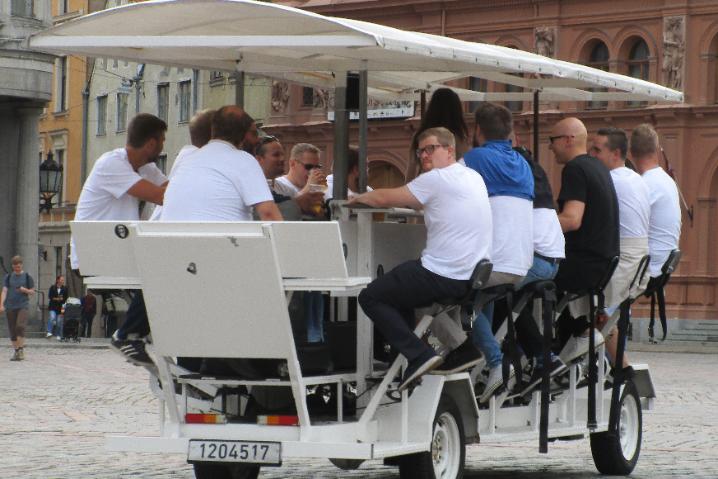
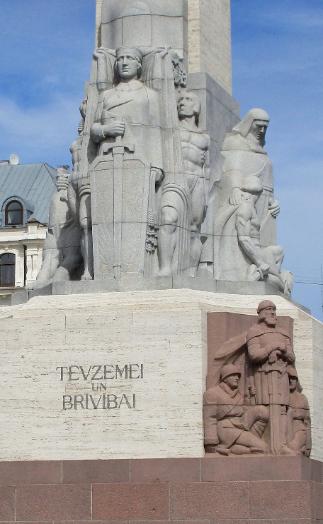
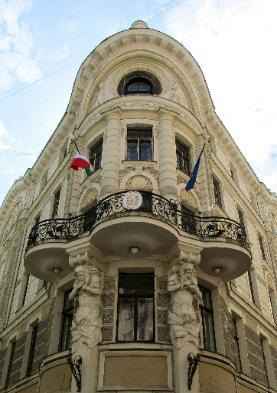
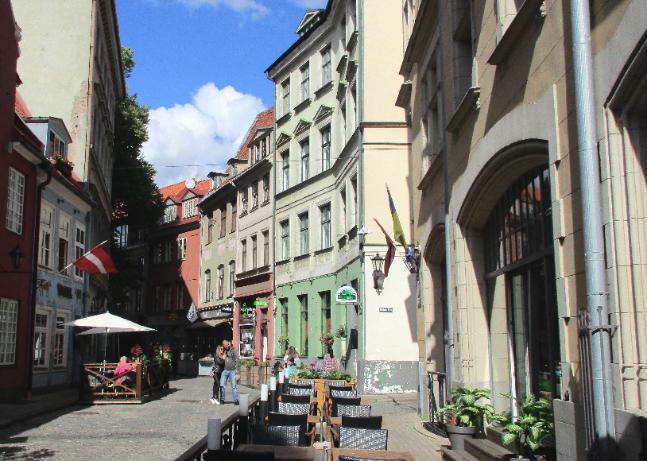
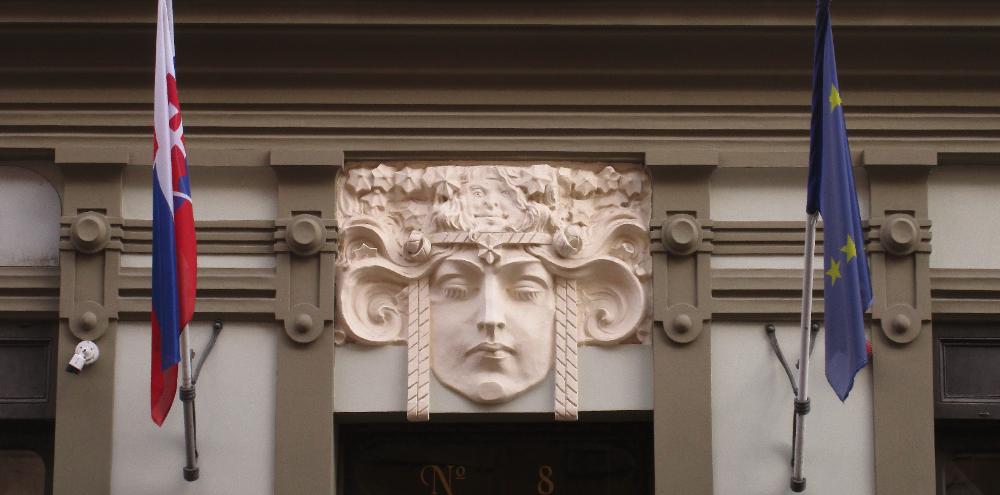
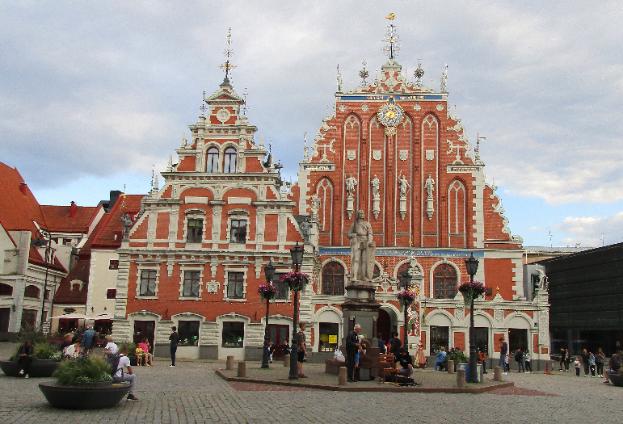
| Statue commemorating fallen Latvian riflemen during WWI |
| Virgin Mary with baby -- another artwork adorning House of the Blackheads |
| Rosena Street, narrowest street in Riga |
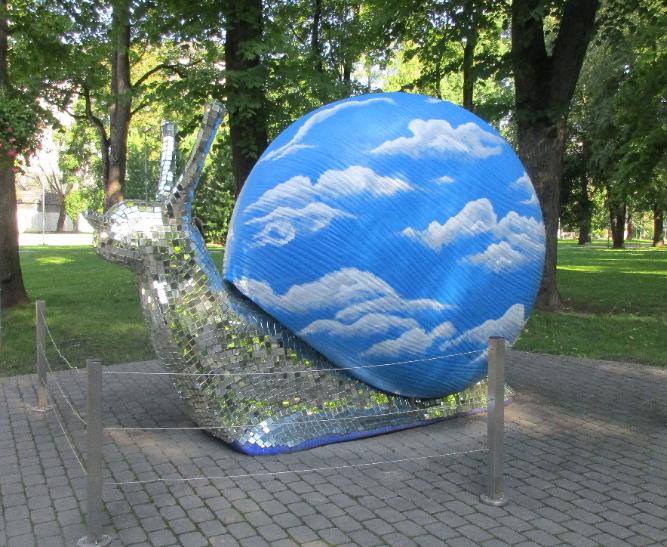
| Of the 800-plus Art Nouveau buildings in Riga, the biggest concentration is east of Old Town, most notably on Albert Street |
| Take your time exploring here, as there are lots of small details to appreciate once you start looking |
| The exuberance and whimsy of some of the statues will make you smile |
| Asparagus ravioli with burnt butter sauce and aged cheese |
